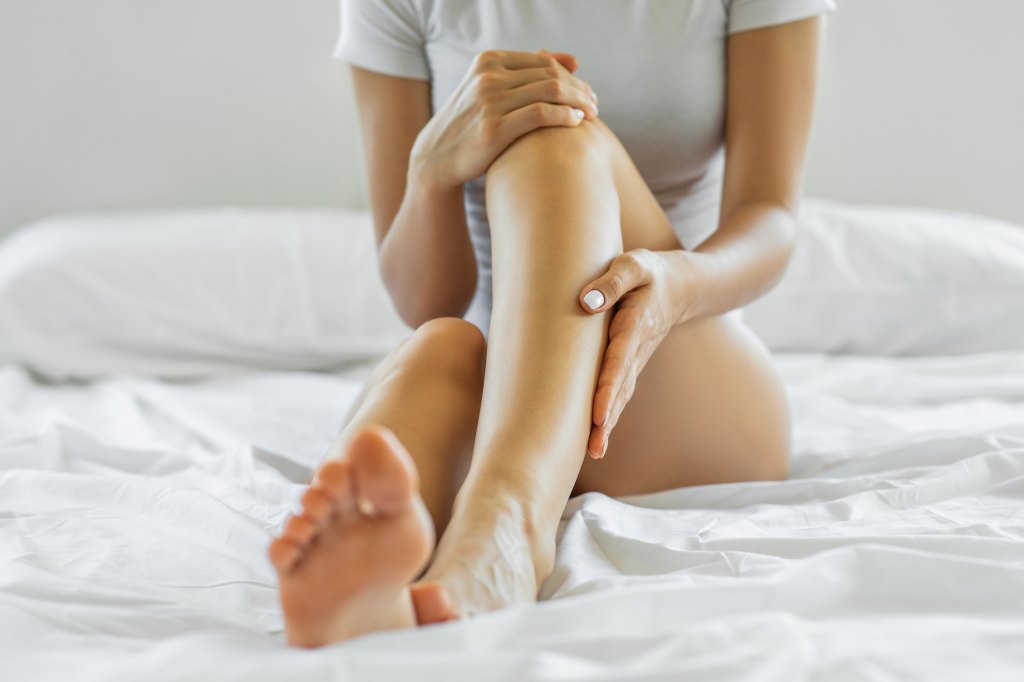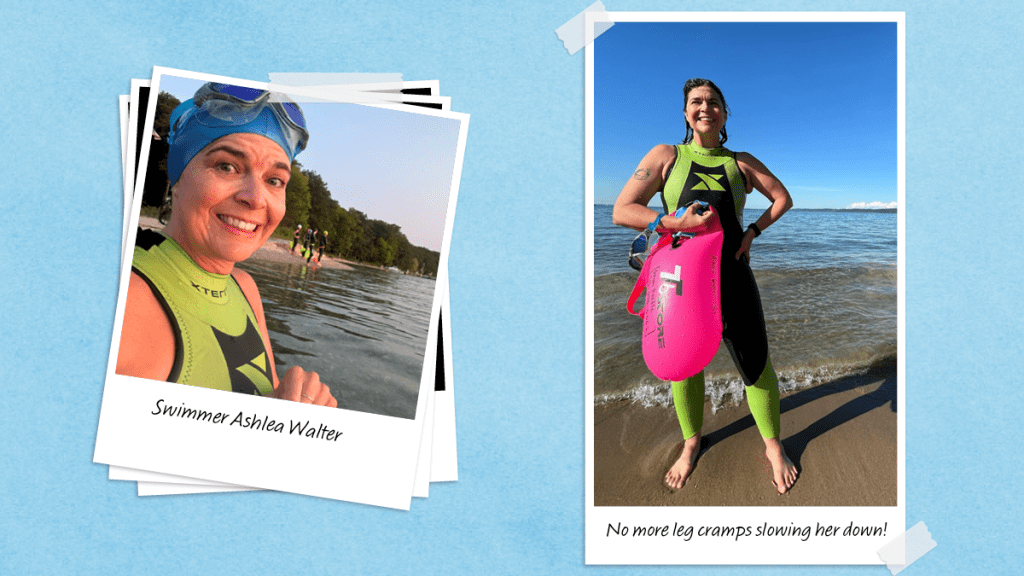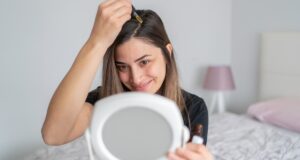Leg cramps are painful and debilitating. They can stop you in your tracks during a busy day or wake you from a restful sleep. Perhaps you’ve already tried remedies like using heating pads, taking muscle relaxers or eating potassium-rich bananas. If you’re still struggling with charley-horse-like leg cramps, there’s good news: People are finding fast relief from a surprisingly simple source: mustard. Keep reading to learn what experts have to say about how to stop leg cramps immediately using mustard. And don’t miss one woman’s success story using this unexpected remedy.
What is a leg muscle cramp?
During normal movements, our muscles naturally contract and relax. But a painful leg cramp occurs when a muscle contracts uncontrollably or suddenly and won’t relax.
It’s not always the muscle’s fault. Sometimes it’s about fascia, the nerve-rich connective tissue that wraps under our skin and plays a major role in pain management. Antonio Stecco, MD, PhD, a leading expert in rehabilitation medicine, explains, “having tight fascia can decrease the threshold of the muscle spindle, which triggers a contraction, facilitating cramps.”
What causes leg cramps?
Many things can trigger a painful leg cramp. Common culprits include over-excursion, dehydration and mineral deficiencies. Some Rx medications such as BETA blockers and ACE inhibitors used to regulate blood pressure list leg cramps as common side effects.
Plus, age can be a factor. Pesky leg cramps can get worse over time, since our tendons tighten and shorten during the aging process, according to the Cleveland Clinic. It’s important to point out that regular leg cramps are different than chronic conditions such as restless leg syndrome.
What health issues wake you up at night?
How to stop leg cramps immediately with mustard
If you’ve ever been jolted awake from a painful leg cramp, you likely want to know how to stop them immediately. And while you can find countless home remedies online that people swear by, one surprising fix works in seconds: mustard.
There isn’t a lot of medically reviewed research on using mustard for this health complaint, but it’s still worth trying. “Mustard is a simple, safe option that people can experiment with,” says Dawn Jackson Blatner, RDN, author of The Flexitarian Diet and a former Head Sports Dietitian for the Chicago Cubs. She recommends taking 1 tsp. of mustard at the first sign of pain. (The simple fix costs less than 4 cents per dose!)

How mustard soothes muscle cramps
Here’s how mustard can help stop leg cramps almost immediately:
It wakes up muscles
Acetic acid is a fatty acid found in mustard’s vinegar that can flood muscles with energy, helping to stop seizing muscles fast. In fact, a 2020 study in the Journal of Strength and Conditioning Research found that taking ¼ tsp. of yellow mustard stops cramping within 85 seconds.
It reduces inflammation
Turmeric, a yellow spice known for giving mustard its vivid color, is proven to dial down pain-triggering inflammatory responses in the body. It’s all thanks to the compound called curcumin, known to alleviate pain symptoms. Italian scientists found people who took curcumin for an extended period of time had 58 percent less joint pain and stiffness than those who didn’t supplement, so it makes sense that it’d ease muscle cramp pain, too.
It calms nerve signals
Mustard may also work as a cramp remedy because of its spicy kick from a compound called isothiocyanate, says Jackson Blatner.
“What happens is that cinnamon, mustard—all kinds of really strong flavors—activate what’s called TRP (transient receptor potential) channels in the throat, mouth and stomach,” says Jonny Bowden, PhD, CNS, author of 150 Healthiest Foods on Earth. That signal overrides hyperactive nerves that cause muscle cramps. He adds, “It’s basically like sending a chill pill to the nerves that are acting crazy.”
It replenishes minerals
One of the main culprits of cramping is believed to be dehydration and mineral imbalances. So when it comes to the mustard trick working, “there is some thought that it has to do with the electrolyte or salt content,” says Lauren Borowski, MD, a clinical assistant professor of sports medicine at New York University, and the head physician for the United States Men’s Ski Jumping Team. She admits, “Some people eat mustard packets. Some drink pickle juice. Others swear by apple cider vinegar.” A common thread in all these home remedies: salt.
It tricks your mind
The placebo effect should not be discounted here. World renowned Harvard psychologist Ellen Langer, PhD, says, “placebos, I think, are our strongest medicine.” Why? As the author of The Mindful Body and “mother of positive psychology” explains, “You’re more likely to find a solution when you’re looking for a solution!”

How one woman used yellow mustard to stop her leg cramps
Busy mother of two Ashlea Walter, 47, suffered from frequent leg cramps and charley horses. The pain affected her hobby as an open-water swimmer in and around Lake Michigan. The last thing she needed to contend with was a leg cramp out in the lake when she couldn’t easily stop and stretch her calves out.
“I tried water, pickle juice, electrolyte drinks and bananas,” Ashlea admits. But nothing seemed to help her leg cramps.
Then Ashlea did her own research and learned that competetive athletes like marathoners often relied on mustard in the moment to stop leg cramps almost immediately. She grabbed some free, tiny mustard packets from a local deli and tucked one into her swim buoy or swim cap each day, “just in case.”
Sure enough, one morning about 2.5 miles into a 4-mile swim, Ashlea felt her legs cramp up. She recalls, “I couldn’t get the cramping to stop. I started treading water and retrieved my mustard packet from my swim buoy. I quickly tore it open and squirted the mustard packet right into my mouth and swallowed it. I felt almost instant relief and got swimming again, able to finish the remainder of the tough swim!”
Since that day, Ashlea shares, “I have used this trick several times whenever I get bad cramps.” She adds, “Now I never go on a swim without having a mustard packet!”
How to prevent leg cramps in the future
Mustard may help ease a leg cramp in the moment, but here are three ways to help prevent cramps from ever happening in the first place:
Stretch before exercise and bedtime
Keeping muscles (and muscular fascia) flexible and supple can help reduce future spasms and cramps.
“There is an excellent lean into the wall technique stretch for leg cramp prevention,” says Jacob Teitelbaum, MD, a pain and fatigue expert and author of You Can Heal From Long Covid.
To do: “Stand eight inches away from a wall, with your hands on the wall,” he says. “Lean into the wall to stretch your calf muscles. Hold for 10 seconds. Then slowly push yourself away from the wall to complete one ‘pushup.’ Repeat for a set of six, three times daily.”
Boost vitamins and minerals
Deficiencies of key micronutrients can make people more prone to cramping. Dr. Teitelbaum suggests taking a high potency multivitamin. Aim for something with 200 mg of magnesium glycinate and 100 to 180 mcg of vitamin K2.
He likes Terry Naturally Energy Revitalization Drink Mix powder supplement, which has a blend of helpful minerals. He says, “This drops cramp frequency by over 50 percent.”
Drink plenty of fluids
Staying properly hydrated during the day can help guard against leg cramps at night. Dana Cohen, MD, author of Quench, says, “dehydration makes the pain you’re experiencing feel worse,” citing 2016 research published in the journal Psychophysiology.
How? “When you’re dehydrated, water is rerouted: Instead of heading to your tissues and joints, it heads straight to your brain, heart and other vital organs that need water in order to keep you alive. That can make tissues and joints stiffer, cause waste by-products such as lactic acid to build up and contribute to pain.”
This content is not a substitute for professional medical advice or diagnosis. Always consult your physician before pursuing any treatment plan.




